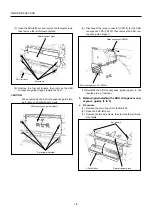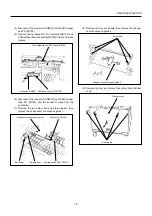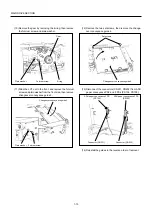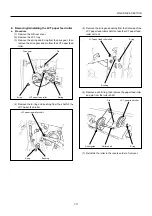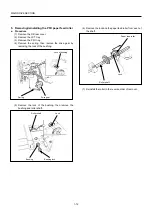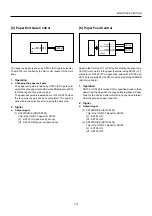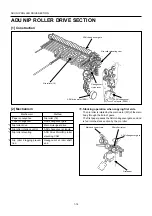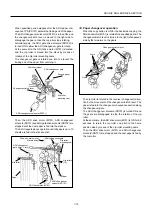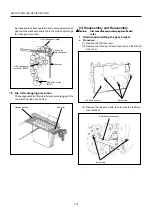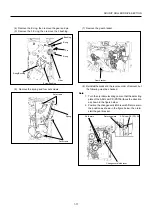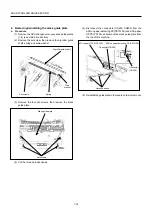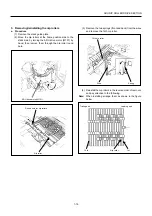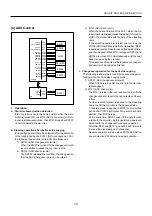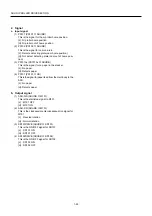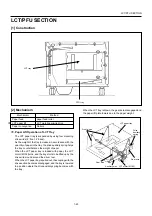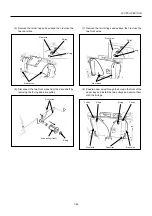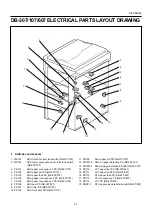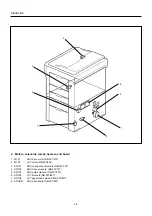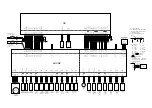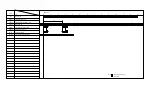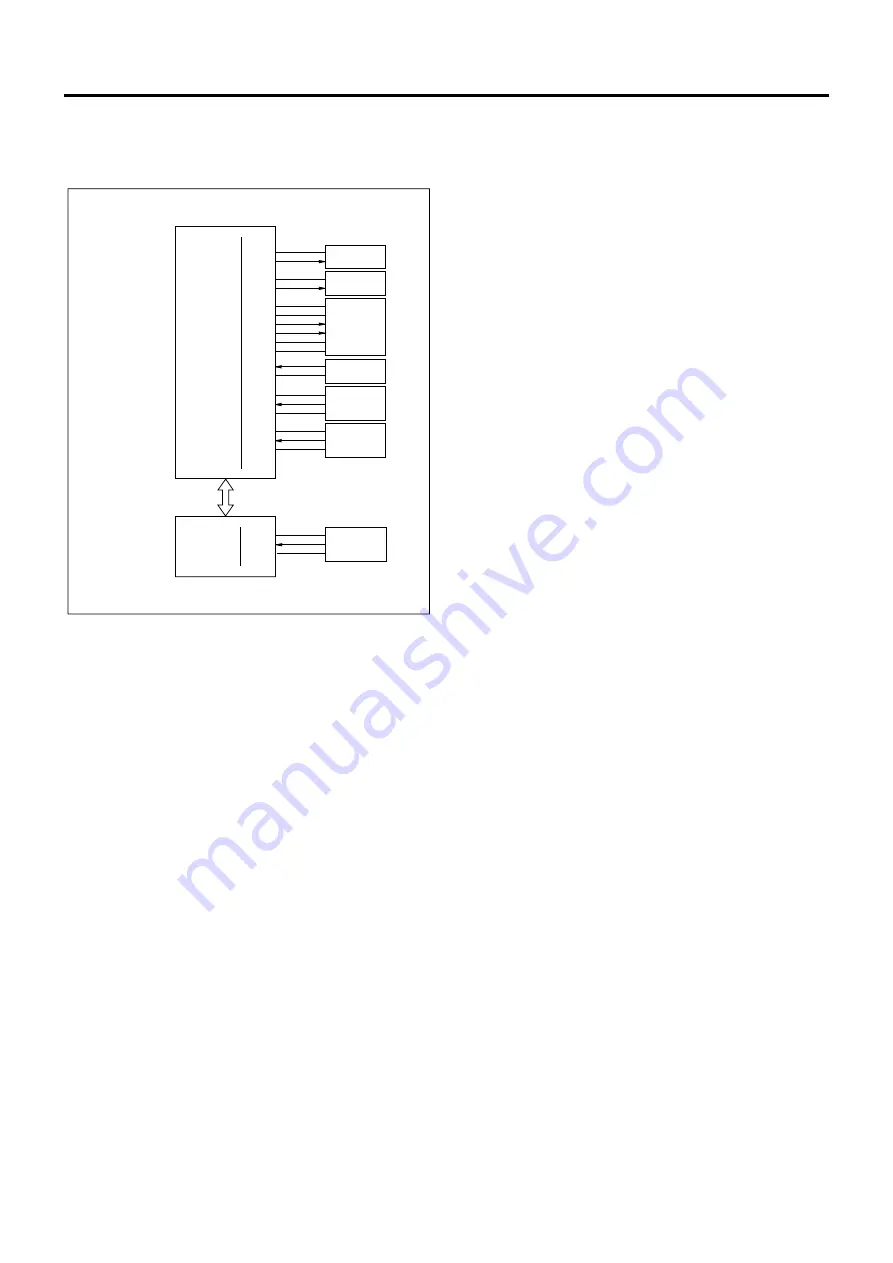
1-21
ADU NIP ROLLER DRIVE SECTION
[4] ADU Control
SD101
205-A1
205-A2
204-1
204-2
206-B1
206-B2
206-B3
206-B4
206-A9
206-B5
203-5
203-6
205-A3
205-A7
205-A10
205-A4
205-A8
205-A11
24V DC
SD101 DRIVE
24V DC
SD102 DRIVE
24V DC
PGND1
ADU-S/S
ADU-F/R
SGND1
5V DC1
PS1010
SGND1
5V DC1
PS106
SGND1
5V DC1
PS107
SGND1
ADUDB
SD102
M101
103-3
103-4
103-5
5V DC1
PS101
SGND
CB
PS1010S
PS106
PS107
PS101
1. Operation
a. Nip roller home position detection
If the nip roller is not in the home position when the main
switch is turned ON, the M101 (ADU drive motor) will turn
in counterclockwise direction. Then M101 stops when PS107
(roller PS) detects the nip roller.
b. Stacking operation after the face side copying
If a specified period of time has elapsed after the detection
of the trailing end by the PS101 (ADU conveyance 1 PS),
the following loads will be turned ON simultaneously:
1) SD101 (ADU changeover solenoid)
When the SD101 is turned ON, the changeover clutch
lever is shifted to cause the nip roller to stop.
2) SD102 (ADU drive solenoid)
The SD102 releases the lock from the drive gear so
that the ADU changeover gate can be rotated.
3) M101 (ADU drive motor)
When the normal rotation of the M101 starts, the nip
roller (that has already nipped the paper) is forced to
shift to the stacker side with the help of the elevating
cams.
If the elevating cams are rotated one turn and the
PS106 (ADU cam PS) detects the home position, M101
is applied a reverse brake for a specified period of time,
and then stopped. When M101 is stopped, SD101 and
SD102 are turned OFF simultaneously until the next
paper is nipped by the nip roller.
This sequence of events will be repeated until a speci-
fied number of stacking has finished.
c. Changeover operation for the back side copying
The following loads will be turned ON to conduct paper re-
feeding when the back side copying starts.
1) SD101 (ADU changeover solenoid)
When SD101 is turned ON, the driving to the nip roller
is disengaged.
2) M101 (ADU drive motor)
The M101 rotates in the reverse direction to shift the
changeover/clutch lever to the opposite side of the nip
rollers.
Another reverse rotation is applied to the elevating
cams to shift the nip roller to the paper exit side.
A reverse brake is applied to M101 for a specified
period after PS106 (ADU cam PS) detects its home
position, then M101 stops.
At the same time, SD101 goes off to apply reverse
rotation to the nip roller. By this operation, papers are
delivered to the changeover conveyance section.
After this, M101 and SD101 go on at 2.6 sec. intervals
to make the elevatating cam rotate once.
Reverse operation will stop when PS1010s (ADU no
paper detection PS) detects no paper condition.


